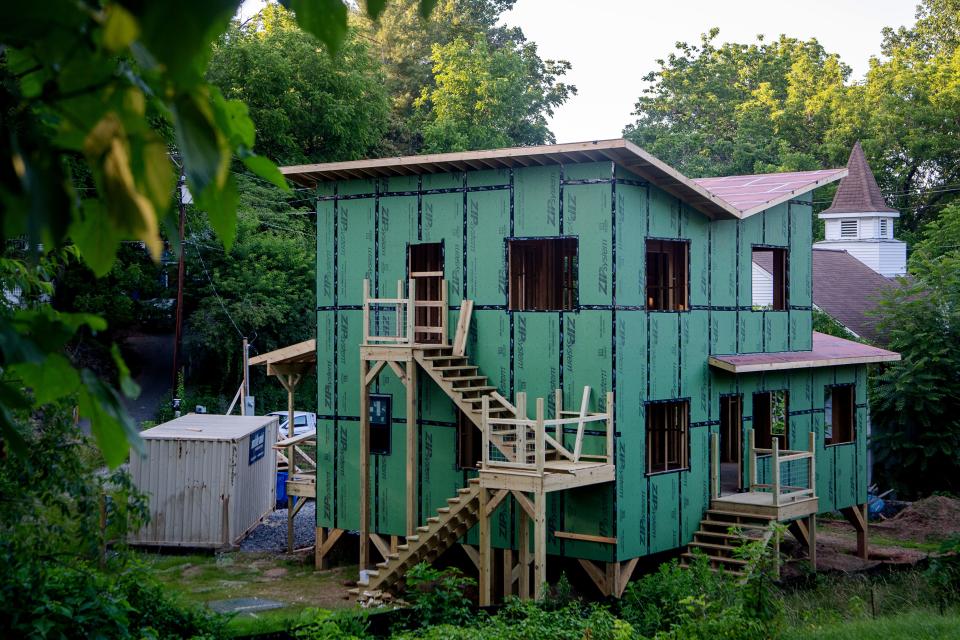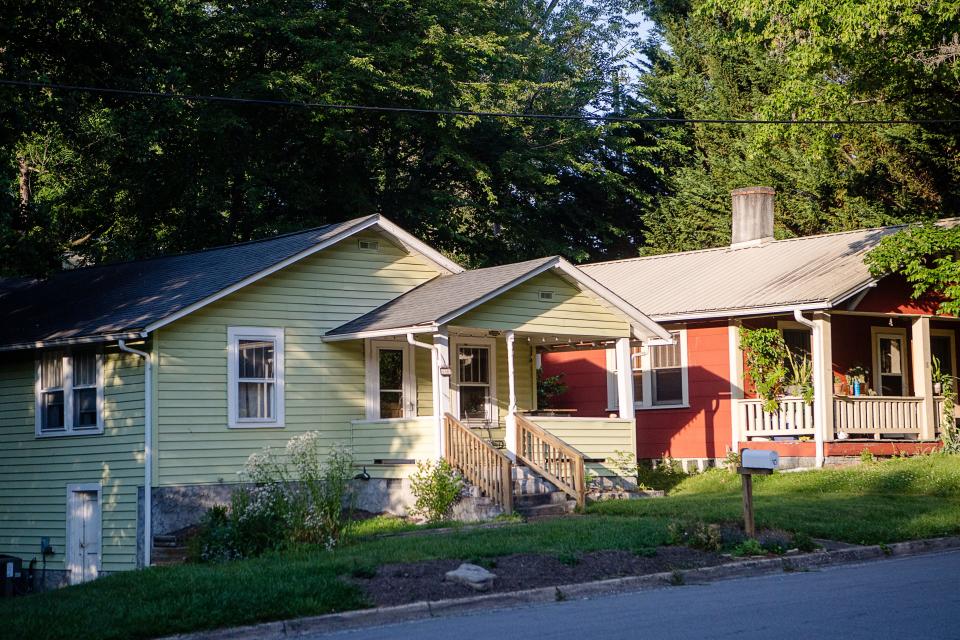As Asheville struggles with home supply, local officials propose additional zoning reforms
ASHEVILLE - Tackling Western North Carolina's estimated for-sale home deficit, reported to be 3,096 in the 2021 Bowen National Study, has been a primary goal local public officials and community members have held for years.
In the years since the study was published the situation has only grown worse. Consider, for example, that median home sale prices in Asheville rose from $400,000 in 2021 to $485,000 in 2023, according to Mosaic Community Lifestyle Realty market reports. Executive Officer of the Builders Association of the Blue Ridge Mountains Megan Carroll believes the rapid increase in prices underscores the urgency of building new homes.
"That problem is just becoming more and more exacerbated, and I think has been brought to a head through that cost conversation, too," Carroll said of the region's housing stock deficit.

Now, those who are building new housing, and the city and county officials working to improve supply and reduce the cost of housing, are looking to implement solutions by proposing new zoning reforms.
Asheville city staff have now brought forth a proposal to collaboratively modify the city's Unified Development Ordinance—known as the UDO—with city advisory boards and the community in order to address the housing supply crisis.
At the July 8 Planning and Economic Development committee meeting, city of Asheville Planning Director Stephanie Monson Dahl presented on a city project to update the UDO. The project would allow City Council, housing advisory boards and the community to collaboratively develop proposals that would address "housing supply, variety and location" over the next 12-18 months.
Two "bundles" of housing amendments that are already underway were described as a "soft kick off" to the plan during the meeting. The first proposal includes modifications that have already been widely introduced as a result of the Missing Middle Housing study and to reduce parking requirements, city permitting review thresholds and allow for more flag lots—the nickname for undeveloped land near current residential areas—to be developed. The amendments are set to come before City Council in September.

A second bundle of UDO amendments would address reducing barriers to building manufactured homes, affordable housing and finding ways to encourage development along transit corridors. City staff expect these amendments to come before City Council in January.
Carroll believes the plan to allow for the development of flag lots and other Missing Middle recommendations would be "very helpful," but says the proposals only are one piece in the larger puzzle of "creative solutions" required to tackle the housing crisis.
"There's not one thing that we're going to do that suddenly will make everything all better," Carroll told the Citizen Times.
More: Answer Man: How many residents qualify for affordable housing in Asheville?
Despite efforts, housing woes grow
Even as Western North Carolina's growth can be seen while on a stroll through the River Arts District where new apartments are being built, or at the Asheville Regional Airport where a complete overhaul is underway, the region's housing woes have grown more acute in recent years.
In June, the Joint Center for Housing Studies of Harvard University released a study indicating that Asheville had the highest income to home price ratio in the state, with the average home in the city costing 6.5 times that of the area median income.
During a June 25 City Council work session, Jerah Smith from Enterprise Community Partners told city council that the community's feelings of "being left behind" were "validated" by the Affordable Housing Plan developed by the nonprofit. The plan estimates the city would need to build nearly 14,000 homes to keep up with population growth through 2050.
One of the concerns City Council member Sage Turner raised during both the work session and a recent Planning and Economic Development Committee meeting was ensuring that housing built in Asheville is affordable. Turner suggested researching possible incentives to further drive affordable housing development.

"We're so far behind in affordability that just simply freeing up the market and building the 5000 units we wish we had already tomorrow wouldn't actually produce the lower targets we need," she said during the July 8 meeting.
City and county officials have for years worked to allocate more money toward affordable housing in the region. The City of Asheville has funded 2,315 affordable housing units since 2001, and in 2022 Buncombe County implemented a $40 million affordable housing bond. The bond has already funded millions in projects,
As for building affordable housing, Carroll noted that local nonprofits like BeLoved Asheville — a local nonprofit that framed multiple tiny homes that target deep affordability in the 30%-40% area median income range — could become a "really interesting model nationwide," while also providing local solutions.
"I think we have a lot of folks around us that do really excellent work trying to figure out housing solutions for people that maybe traditionally don't have as many options," Carroll said.
More: Developer plans to continue Airbnb-to-hotel plan; application is 'incomplete,' city says
More: Asheville-based makers of the ENO hammock, popular outdoors brand, celebrates 25 years
Will Hofmann is the Growth and Development Reporter for the Asheville Citizen Times, part of the USA Today Network. Got a tip? Email him at WHofmann@citizentimes.com.Please help support this type of journalism with a subscription to the Citizen Times.
This article originally appeared on Asheville Citizen Times: Asheville eyes additional zoning reform to target home prices, supply

